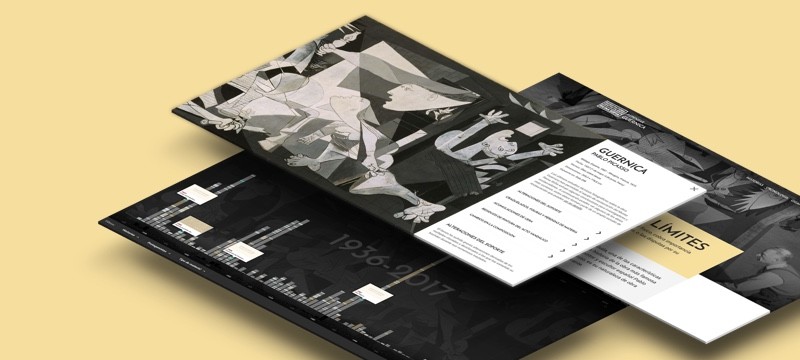The building designed by Luis Lacasa and Josep Lluís Sert to represent Spain at the Paris International Exhibition of 1937 was a reference point in principles of contemporary modern architecture, owing to a formulation based on simple lines, the use of basic materials, and the creation of a highly functional exhibition space.
Lacasa’s and Sert’s pavilion transcended the physical and geographical to become the crucible of an age, foreshadowing the contiguous destination of art, literature and politics in the latter years of the Second Republic. Many of the names involved in this political/artistic project passed away or were forced into exile after the Spanish Civil War.
In addition to making art visible during wartime, its support of Spanish artists and internationally promulgating art, culture and popular Spanish traditions, along with the active reception of everything related to the pavilion and everything that took place inside it, has ensured its memory lives on.
The pavilion became the perfect structure to deploy an effective propaganda machine, and remained a device inside a political agenda.

Recovering the pavilion
The politicians, journalists, critics, historians, staff from museums and institutions, and artists who all visited the pavilion in 1937 were the people who worked to architecturally and symbolically restore it, either immediately or some years later, and were those who absorbed the plastic, aesthetic and political lessons taken from the works on display there, most notably Picasso’s Guernica.
Due to its ephemeral nature — it was demolished once the exhibition in Paris had concluded — the pavilion has been reconstructed, either totally or partially, in various initiatives. As a space for an artistic/cultural programme with political connotations and carried out in a context of war, its restoration has remained at once associated with a metaphorical will to reconstruct the world order and constitutes an homage and representation of an exercise to enhance the works originally housed there and still conserved today.
Reconstructions
Therefore, its recovery chiefly responds to a will to contextualise Guernica, and to acknowledge the reasons behind the painting’s creation. When, in 1956, Willem Sandberg, director of Stedelijk Museum in Amsterdam, obtained permission to show Guernica in his museum, as well as its related drawings and studies, his first act was to “reconstruct” the pavilion, uniting the most significant works on display. For that reason, he contacted Josep Lluís Sert, Dora Maar and even located Alexander Calder’s Mercury Fountain in Paris. Other reconstructions of the pavilion were of a more symbolic nature and of special interest architecturally, for example the 1992 reconstruction in a 1:1 scale in Barcelona to coincide with the Olympic Games being held in the city.
Since 1992, in the Museo Reina Sofía the painting is one of the key works in the general arrangement of the collection, and from that year on its display has always been associated with the programme corresponding to Sert’s and Lacasa’s building, and is shown alongside the graphic pieces, works and artists that participated in the pavilion.













